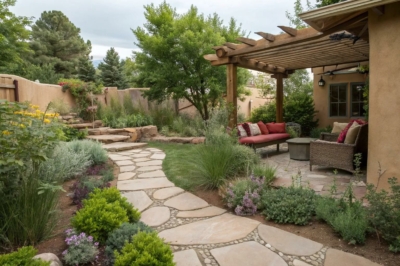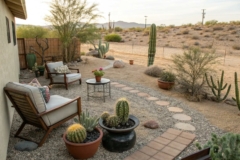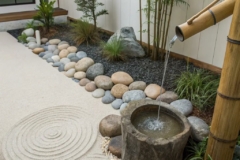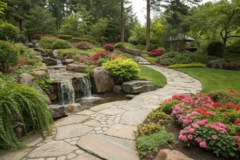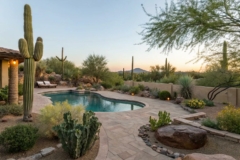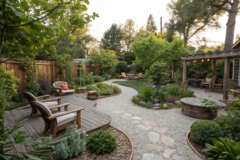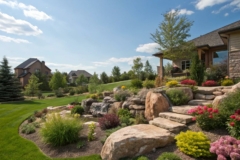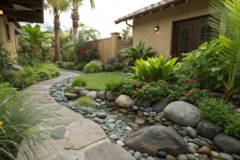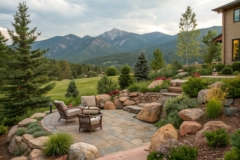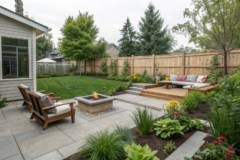1. Reflect Cultural Influences
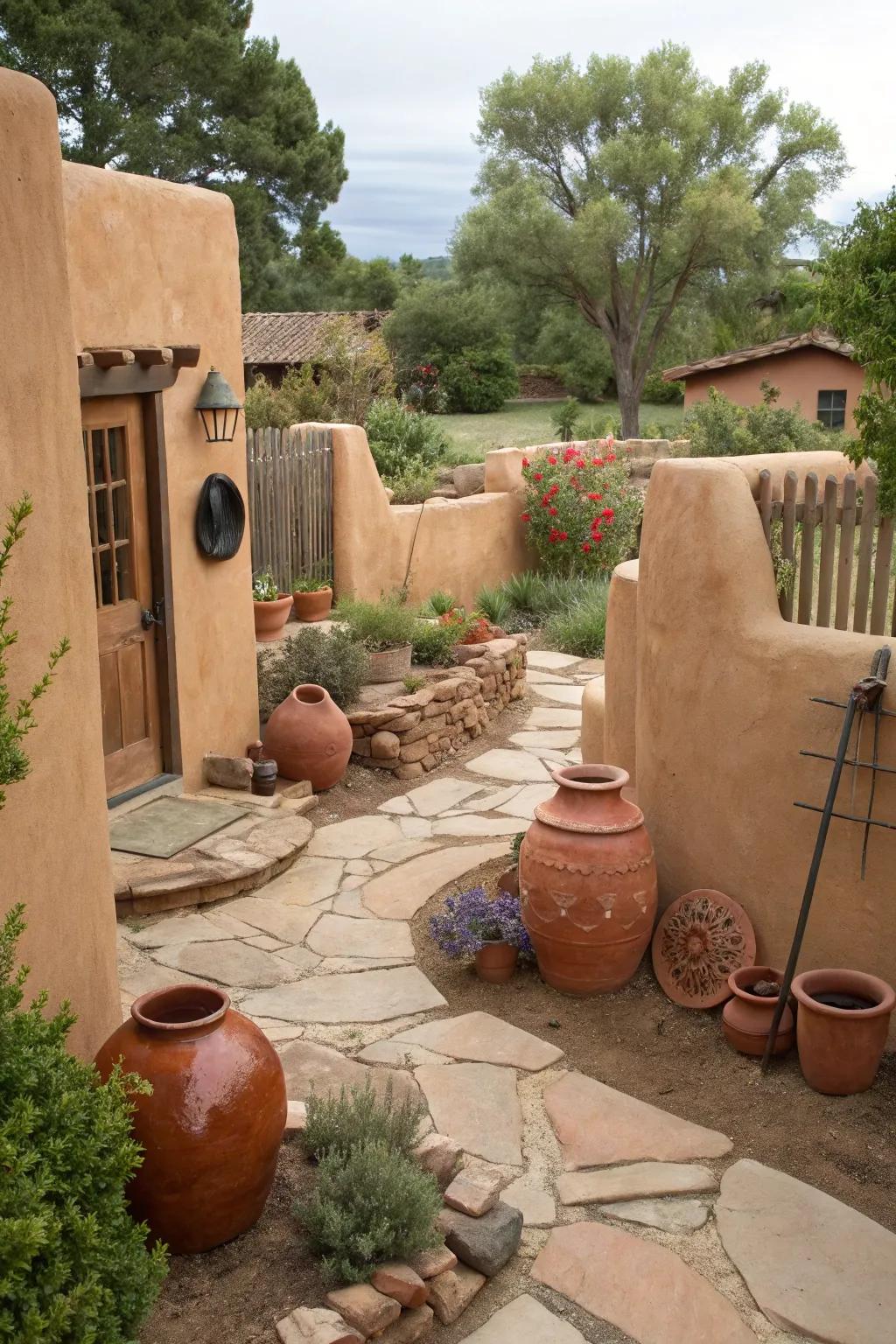
Infuse Southwestern charm with adobe structures or handmade pottery. These elements really bring a touch of regional culture to your yard.
Check if these fit your needs:
- Handmade Terracotta Pottery: Enhance your garden with authentic handmade terracotta pottery for a true Southwestern feel.
- Adobe Garden Wall Planters: Add charm with adobe-inspired wall planters to elevate your landscaping design effortlessly.
- Southwestern Outdoor Lanterns: Illuminate your pathways with Southwestern lanterns, merging functionality with cultural artistry.
2. Embrace Desert Landscaping

Why not let the desert inspire your garden? Succulents and cacti are not only drought-tolerant but can be arranged to create eye-catching displays throughout your yard.
A few things you might like:
- Assorted Succulent Plant Pack: Transform your garden with a mix of vibrant succulents, perfect for a striking desert landscape.
- Decorative Cactus Collection: Enhance your yard’s charm with a variety of cacti, ideal for desert-inspired displays.
- Terracotta Plant Pots: Accent your cacti and succulents with stylish terracotta pots, ideal for any desert-themed garden.
3. Explore Xeriscaping
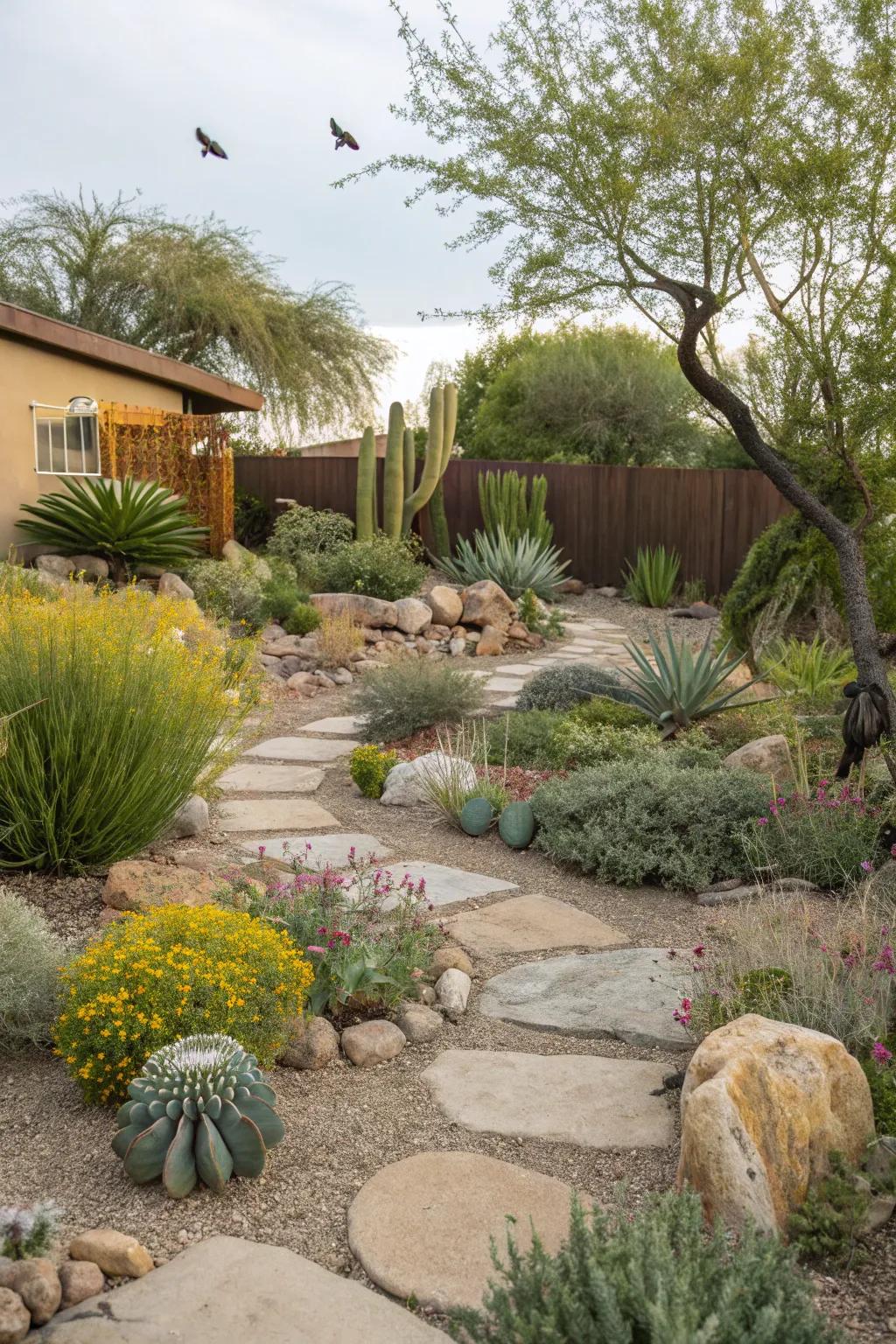
Consider xeriscaping to reduce water use while still having a lush garden. Drought-resistant plants like lavender or sage can thrive and provide lush greenery.
Useful items to consider:
- Drought-Resistant Plant Assortment: Enhance your garden with drought-resistant plants perfect for xeriscaping in dry climates.
- Decorative Landscape Rocks: Add texture and visual appeal to your xeriscape with beautiful decorative rocks.
- Drip Irrigation Kit: Install an efficient drip irrigation system to conserve water and maintain a healthy garden.
4. Focus on Native Plants
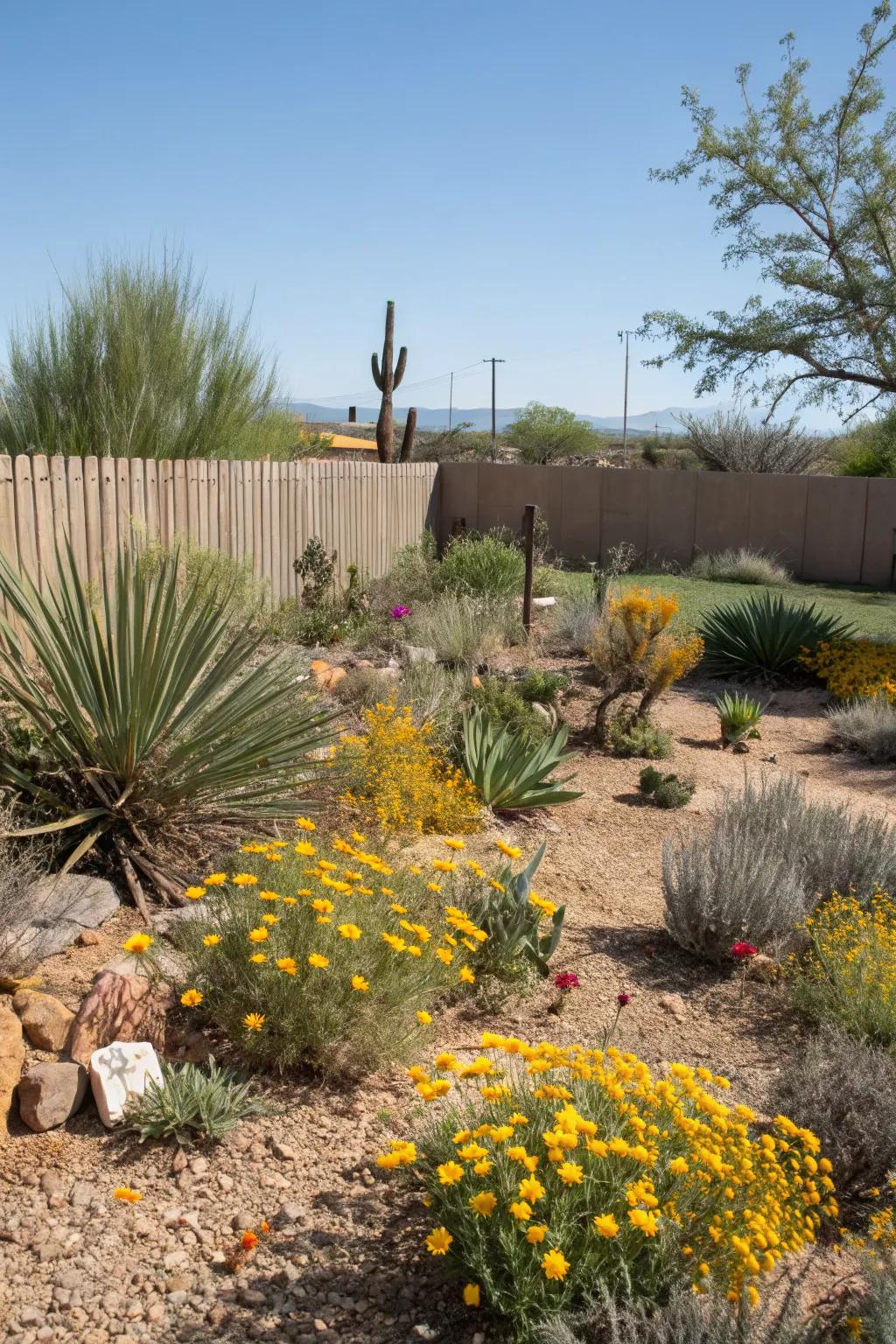
Choose native plants like yucca or desert marigold to ensure your garden thrives in the local climate. These are not only resilient but also support local wildlife.
These products might help:
- Native Plant Seed Mix: Enhance your garden with native seeds for a resilient and thriving landscape. Perfect for desert climates.
- Drip Irrigation Kit: Install an efficient drip system to ensure your native plants receive optimal water without waste.
- Desert-Friendly Soil Amendments: Boost soil health with amendments tailored for desert gardening. Improve plant growth and vitality.
5. Add a Tranquil Water Feature

Introduce a touch of tranquility with a fountain or small pond. These features not only look beautiful but bring a soothing soundscape to your outdoor space.
You might give these a try:
- Outdoor Solar Fountain: Elevate your space with a solar fountain, offering eco-friendly relaxation in your backyard.
- Stone-Look Garden Pond Kit: Create a calming retreat with a stone-look pond kit, adding elegance to your garden.
- Ceramic Water Feature: Introduce harmony with a ceramic water feature, enhancing your outdoor aesthetic effortlessly.
6. Create Natural Pathways
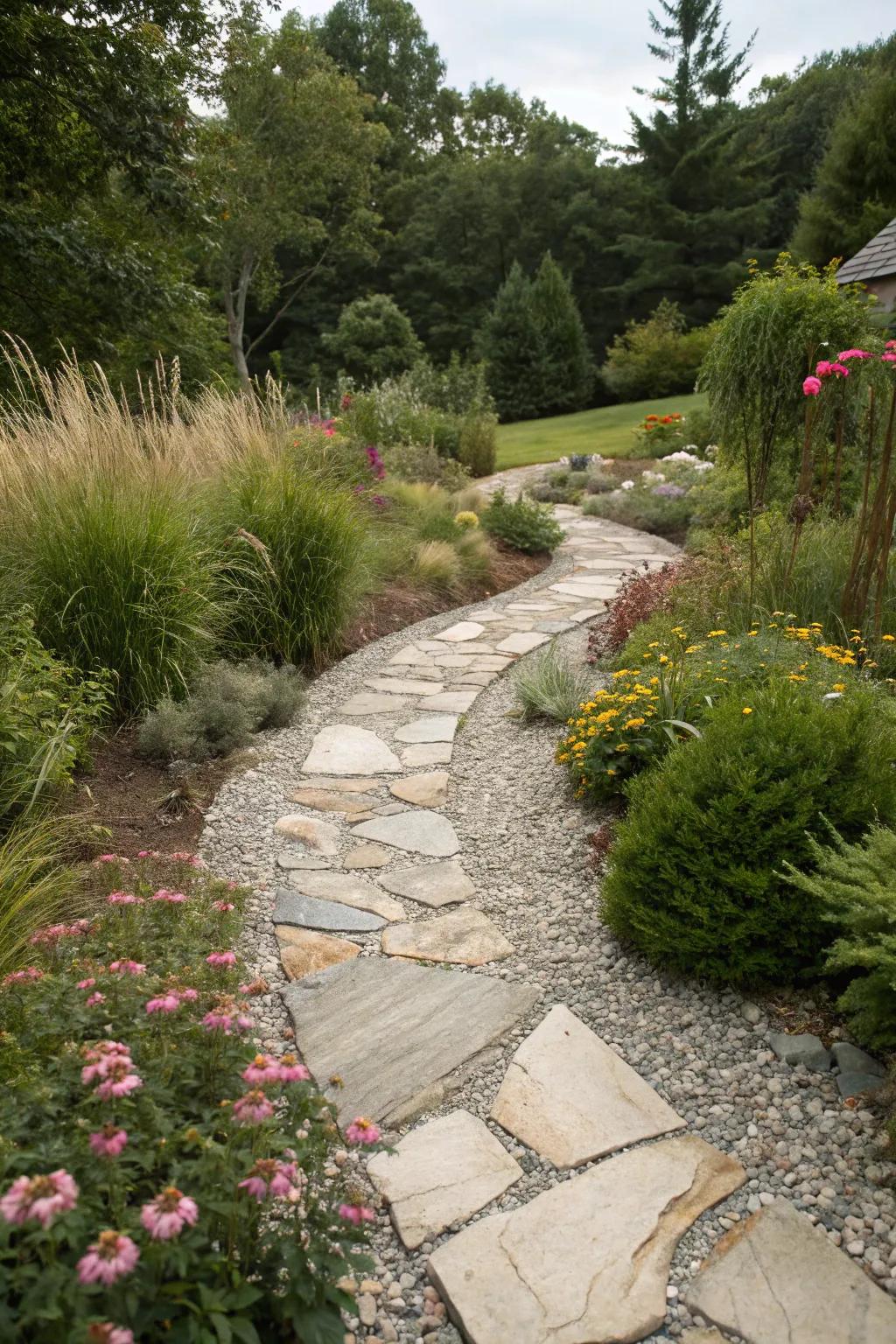
Lay down stone or gravel pathways that meander through your garden, blending effortlessly with the natural environment. I’ve found these paths add charm and are incredibly low-maintenance.
Some handy options:
- Natural Stone Pavers: Transform your garden with stunning stone pavers that enhance natural beauty effortlessly.
- Decorative Gravel Mix: Enhance your garden paths with decorative gravel for a low-maintenance, charming landscape.
- Garden Edging Stones: Define your path with durable edging stones, adding elegance to any garden design.
7. Experiment with Colorful Tiles
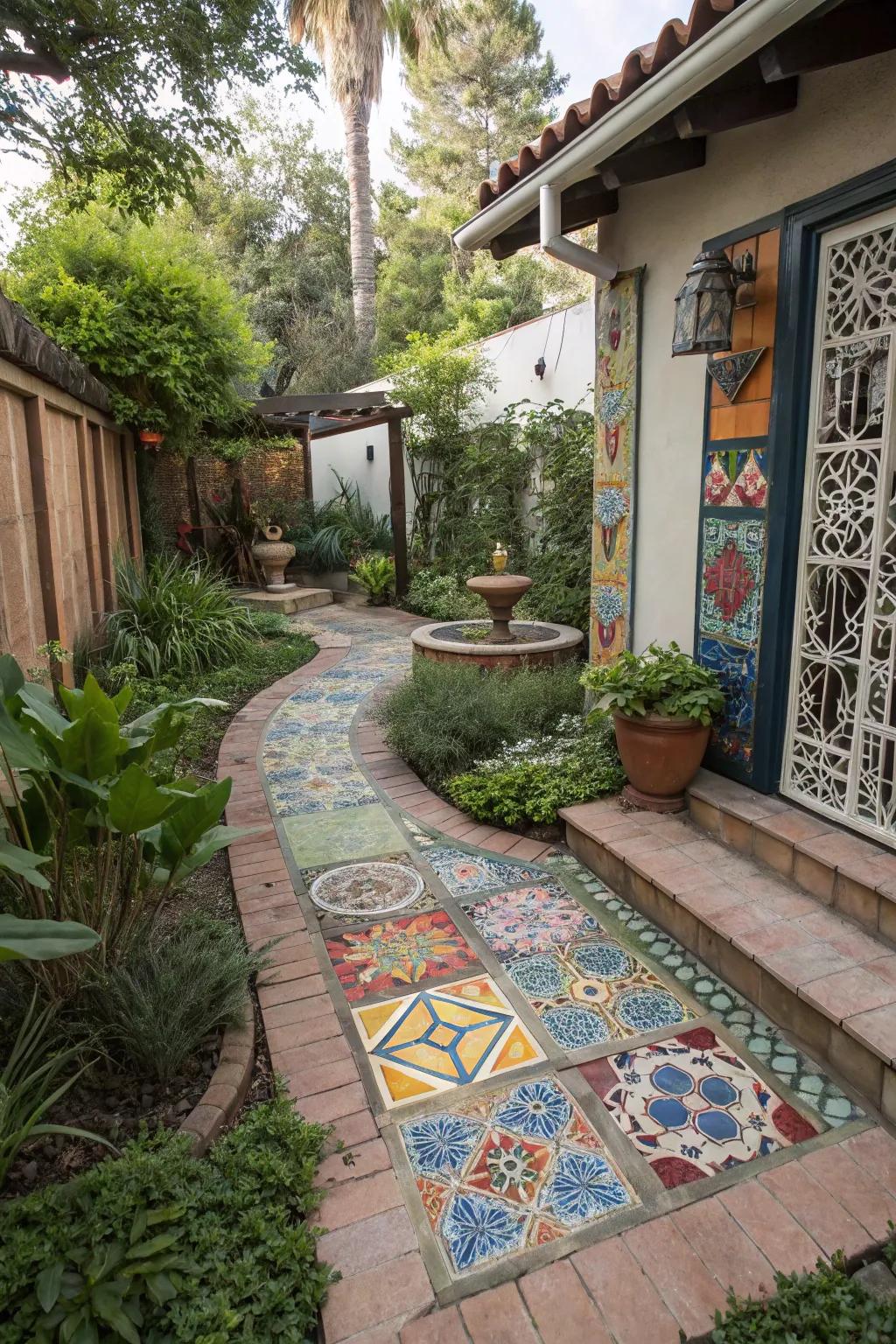
Use colorful tiles in pathways or feature walls to add a splash of color and vibrancy. I’ve found they can completely transform the feel of a space.
Possibly handy products:
- Bright Mosaic Outdoor Tiles: Transform your pathways with vibrant mosaic tiles, adding unique style and flair to your space.
- Decorative Ceramic Wall Tiles: Enhance your feature walls with decorative ceramic tiles for a splash of color and elegance.
- Weatherproof Tile Adhesive: Ensure lasting beauty with reliable, weatherproof adhesive for secure tile placement outdoors.
8. Use Stone and Rock Accents
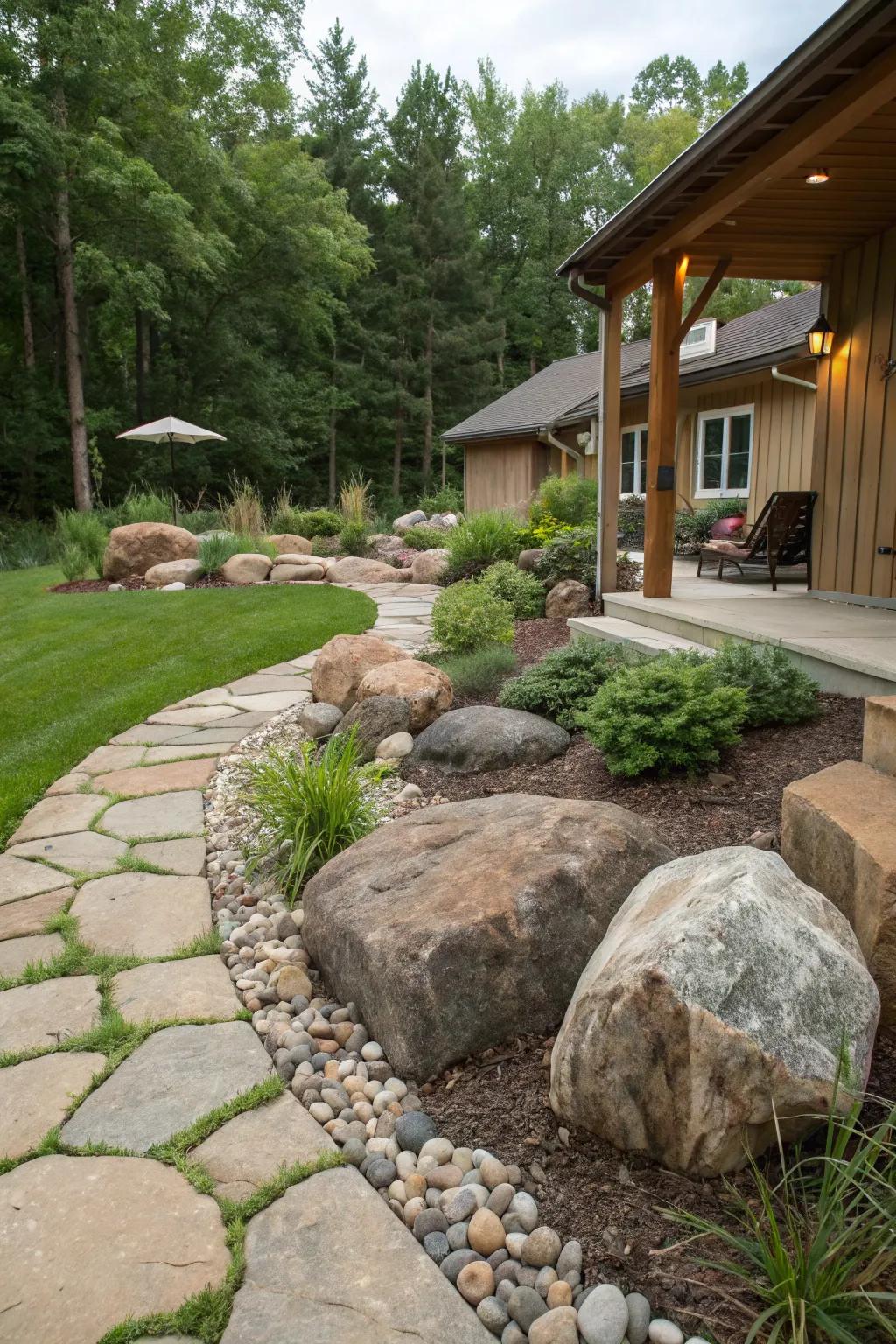
Integrate rocks and stones into your design for both function and decoration. I love how they add texture and can serve as natural dividers or seating.
These products might be useful:
- Decorative Garden Pebbles: Enhance garden paths and borders with these natural decorative pebbles for a rustic charm.
- Large Landscaping Boulders: Use large boulders for striking focal points and natural seating in your landscape design.
- Stepping Stones for Garden: Create a rustic pathway using these durable stepping stones, perfect for any backyard setting.
9. Incorporate Reflective Surfaces
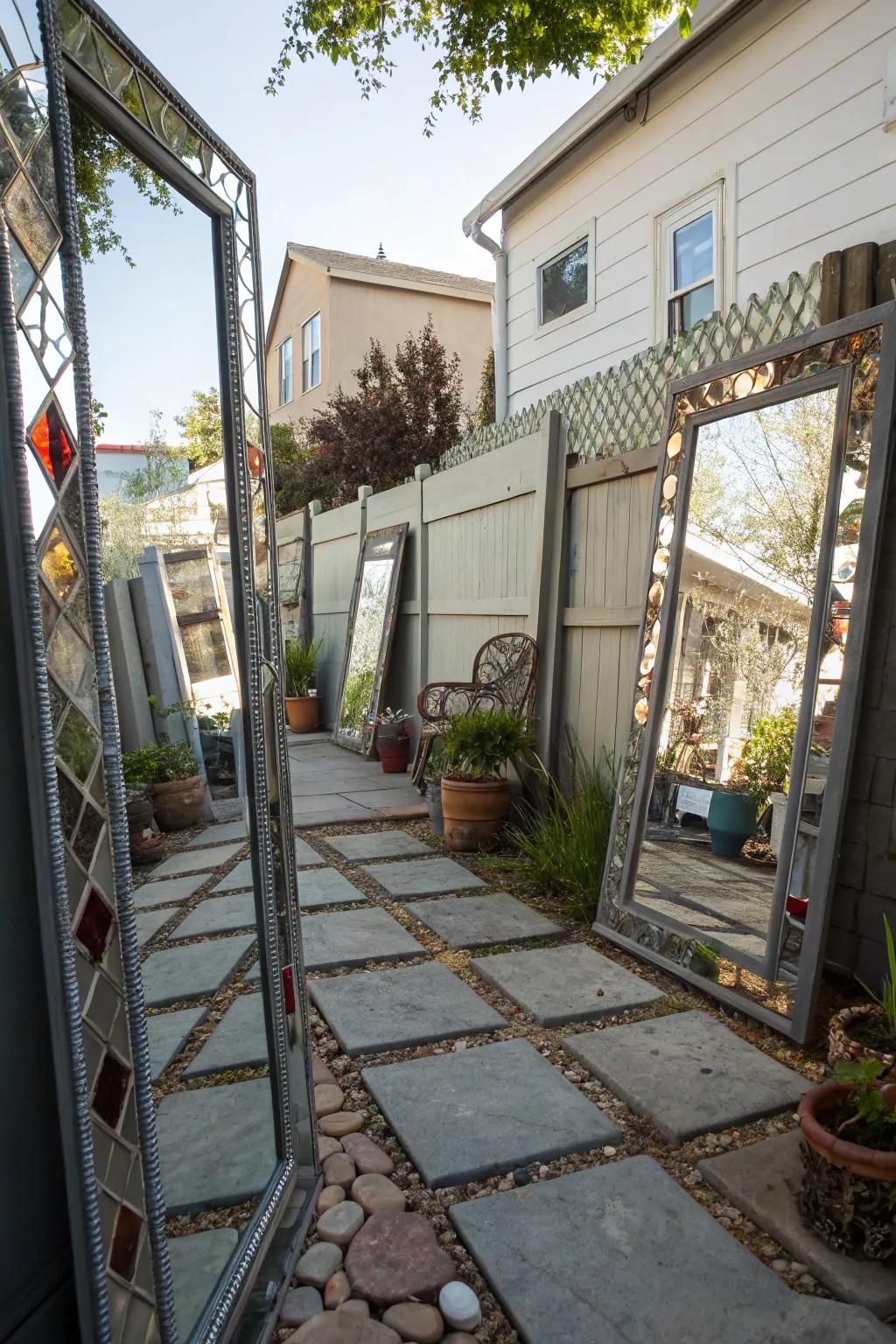
Use reflective surfaces like mirrors or glass to create the illusion of more space. It’s a trick I’ve seen work wonders in smaller backyards.
A few choices to try:
- Outdoor Decorative Wall Mirror: Enhance your backyard space with this mirror, perfect for creating the illusion of depth.
- Reflective Glass Ornaments: Add charm and light with these reflective glass ornaments designed for outdoor use.
- Garden Mirror Panels: Transform your garden area by using these mirror panels to create a sense of spaciousness.
10. Design a Meditation Corner
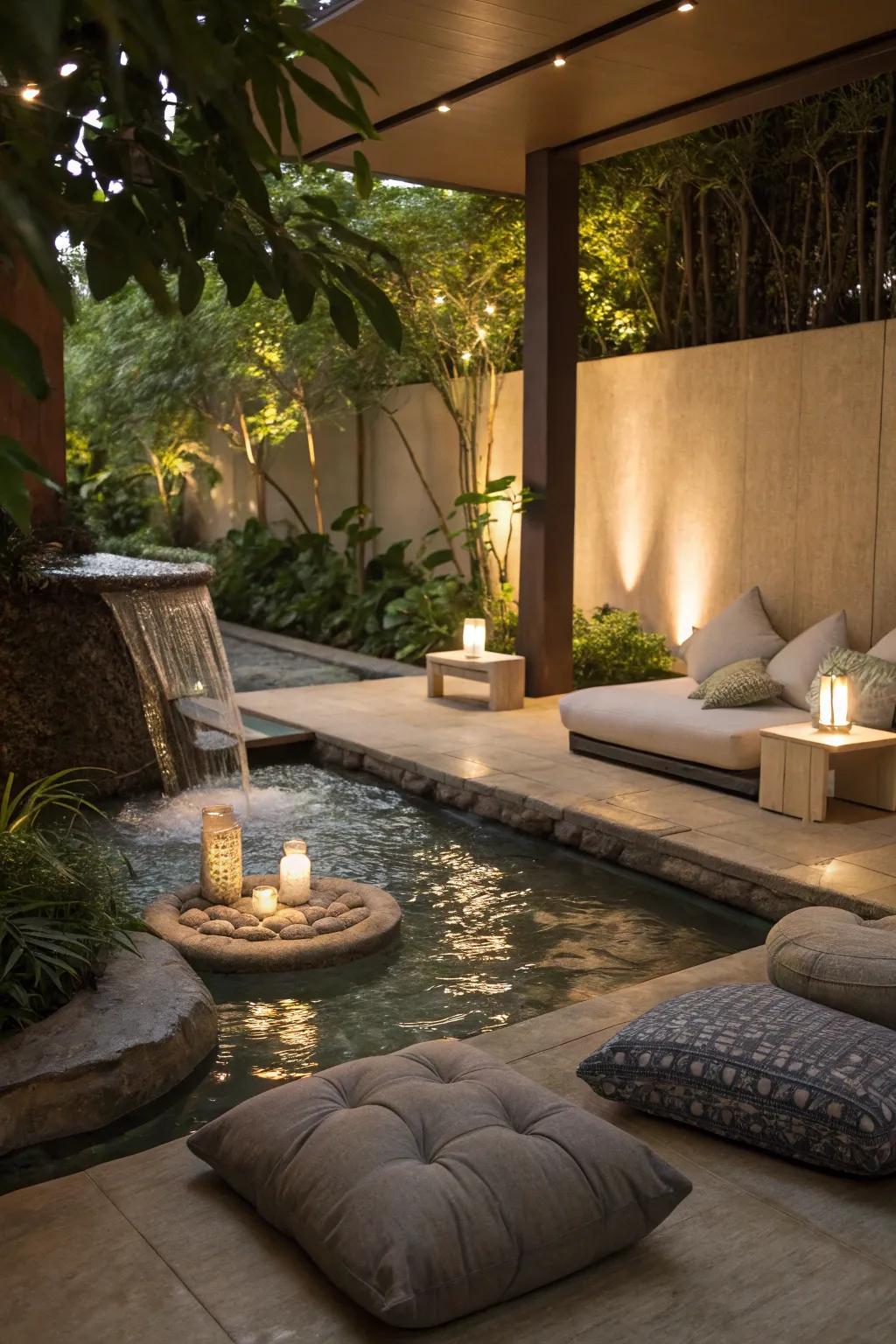
Create a meditation corner with comfortable seating and calming elements like a small water feature. It’s your personal retreat within the garden.
Might be a good match:
- Outdoor Floor Cushions: Add comfort with these plush floor cushions for your meditation space to enhance relaxation.
- Water Feature Fountain: Create soothing sounds with a water feature fountain, perfect for tranquil meditation moments.
- Decorative Lanterns: Illuminate your meditation corner with elegant lanterns, adding warmth and ambiance to your retreat.
11. Incorporate Artistic Sculptures
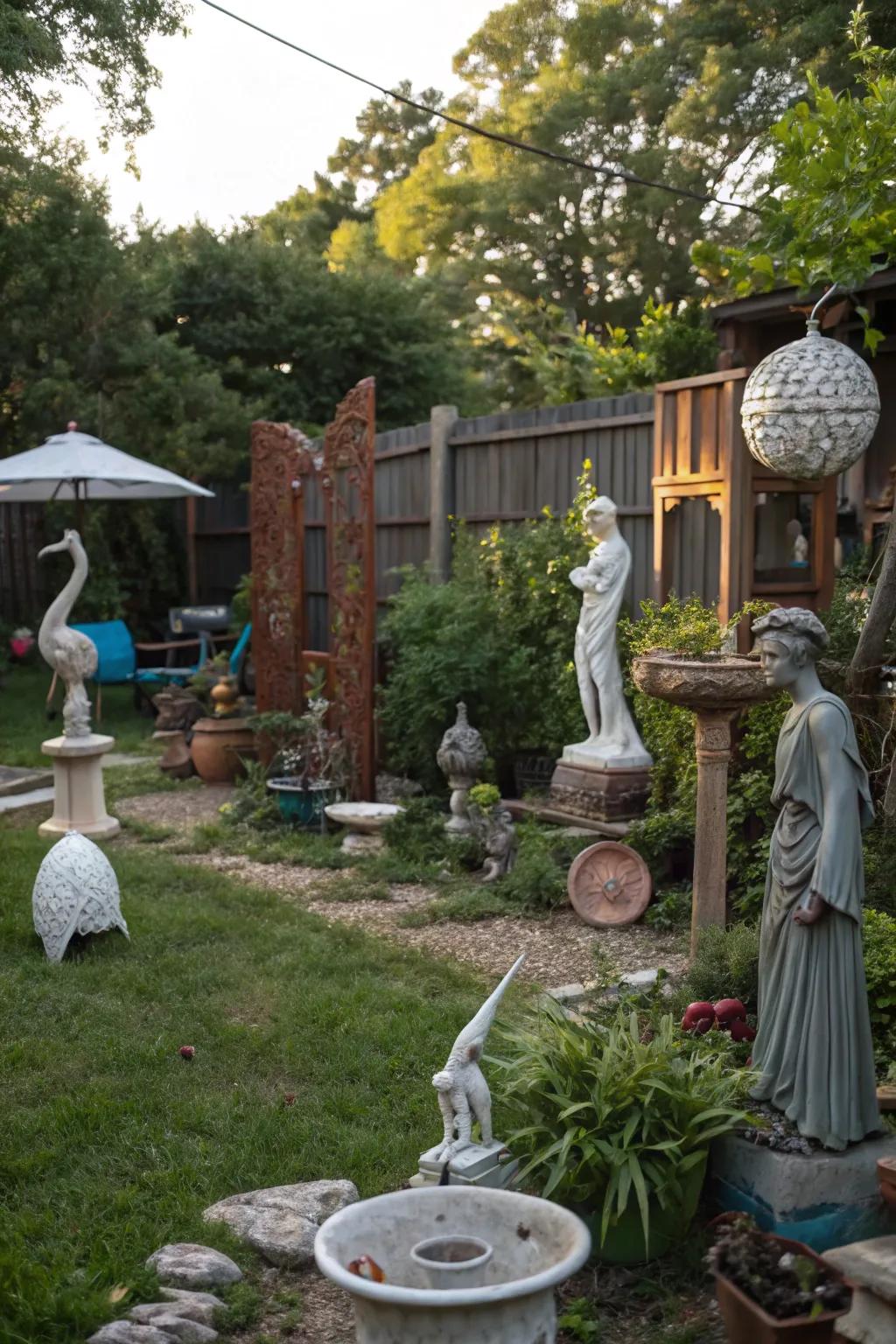
Scatter artistic sculptures or installations around your garden for a touch of whimsy and personality. They can become conversation starters at gatherings.
A few suggestions:
- Abstract Metal Garden Sculpture: Enhance your garden’s charm with this striking abstract metal sculpture. Perfect for a creative touch.
- Meditative Stone Buddha Statue: Bring tranquility to your backyard with a serene stone Buddha statue. Ideal for peaceful vibes.
- Whimsical Fairy Garden Figurines: Add playful magic to your garden with whimsical fairy figurines. Great for imaginative spaces.
12. Design Outdoor Seating Areas
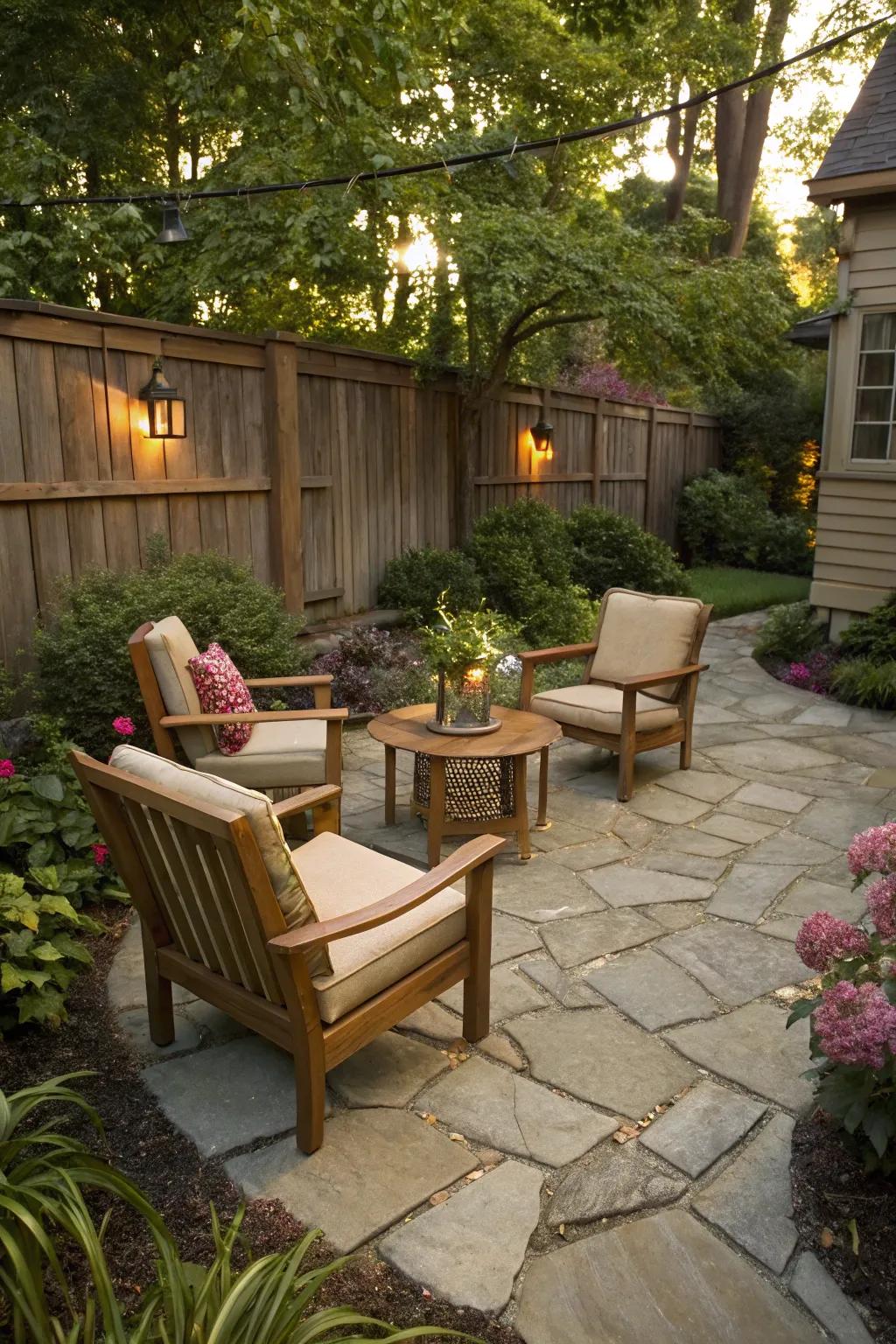
Create a cozy patio or seating nook where you can unwind or entertain under the stars. I love using natural materials like wood or stone to keep it harmonized with the landscape.
Explore these options:
- Wooden Patio Furniture Set: Enhance your backyard with stylish and durable wooden furniture for ultimate comfort and relaxation.
- Outdoor String Lights: Create a magical ambiance with weatherproof string lights, perfect for cozy evenings under the stars.
- Natural Stone Pavers: Transform your outdoor space with beautiful stone pavers for a natural and elegant look.
13. Incorporate Edible Landscaping

Why not add some edible plants like herbs or berry bushes? They’re beautiful and practical, and I’ve found they make cooking even more rewarding!
Check these products out:
- Herb Garden Starter Kit: Start your edible garden with this kit and enjoy fresh herbs year-round.
- Berry Bush Seedlings: Plant these berry bushes for delicious, fresh berries right from your backyard.
- Raised Garden Bed Kit: Elevate your gardening game with a durable raised bed for easy and organized planting.
14. Design a Cozy Nook
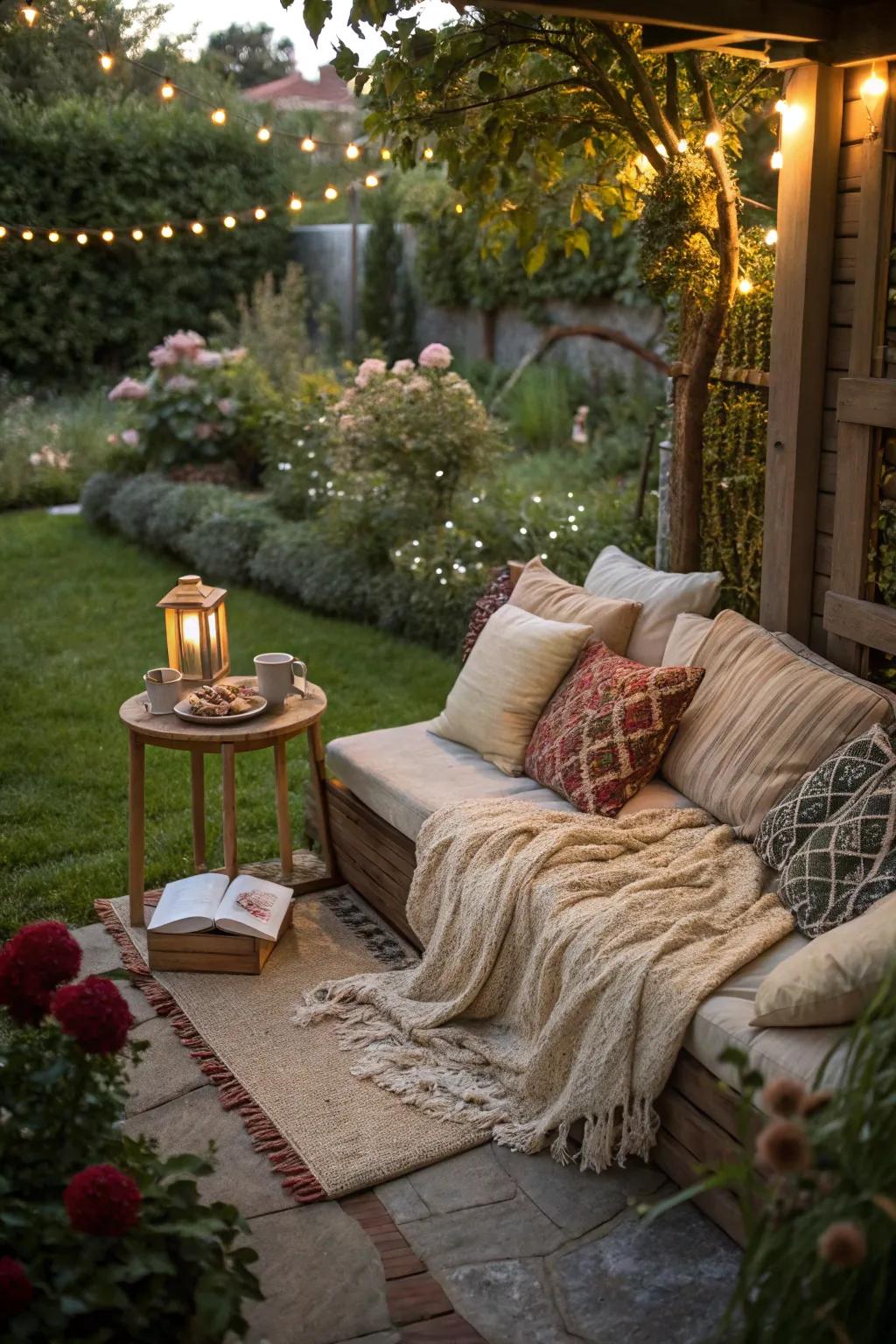
Create a cozy nook with cushions and throws for a personal retreat. It’s an ideal spot for a quiet morning coffee or an evening glass of wine.
A few relevant products:
- Outdoor Cushions Set: Enhance comfort with plush outdoor cushions for your relaxing nook. Perfect for lounging anytime.
- Warm Throw Blanket: Cuddle up with a soft throw blanket, adding warmth and coziness to your outdoor retreat.
- Decorative Lantern: Illuminate your space with charming lanterns, creating a magical ambiance for any evening gathering.
15. Add a Shade Structure
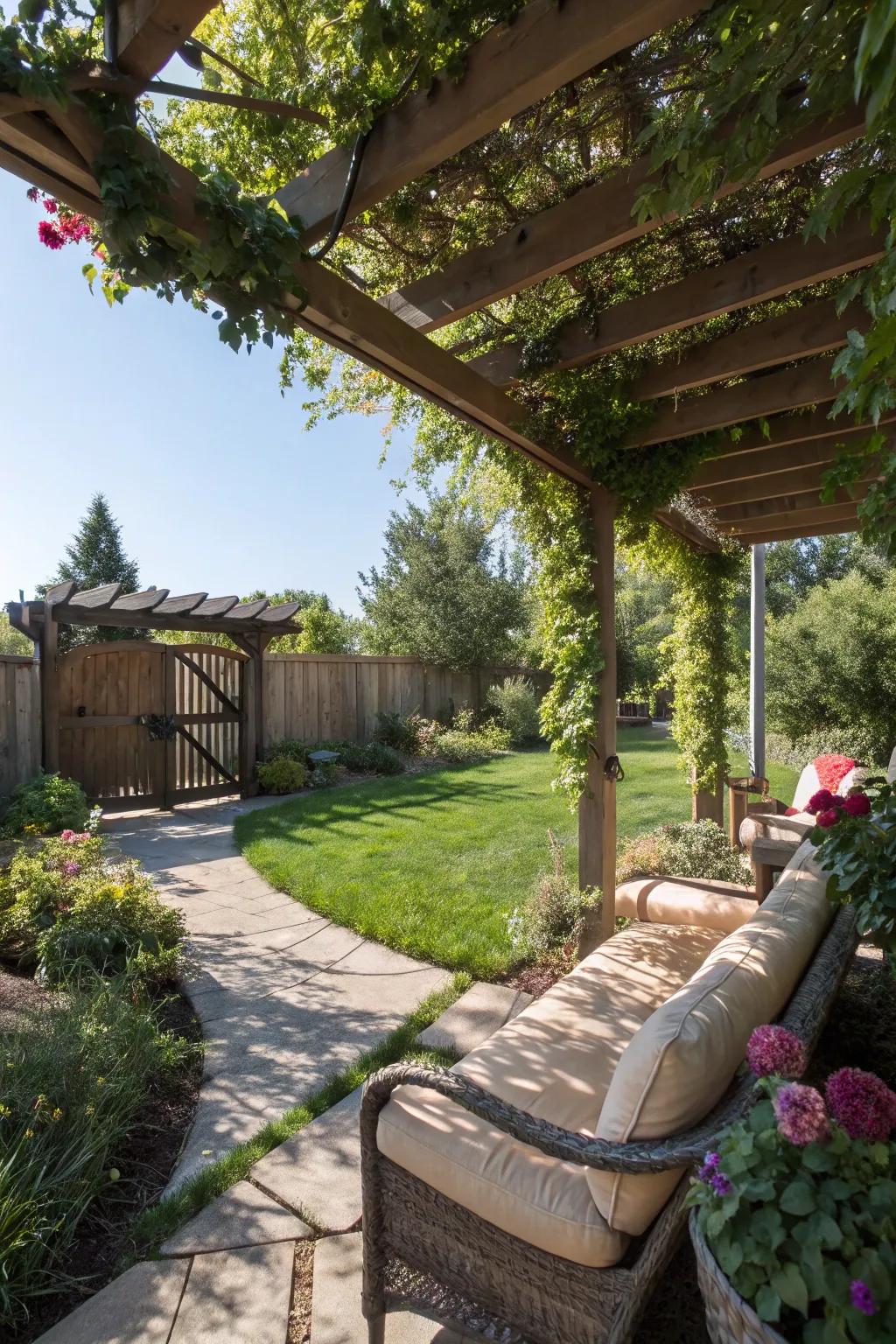
A shade structure like a pergola offers relief from the sun while adding architectural interest. I love relaxing under mine with a good book.
You might like:
- Wooden Pergola Kit: Enhance your backyard with a wooden pergola, providing shade and a touch of elegance.
- Outdoor Sectional Sofa: Relax comfortably under your pergola with this stylish and weather-resistant outdoor sectional sofa.
- Climbing Plant Trellis: Support climbing plants on your pergola for natural shade and a lush, green look.
16. Consider Permeable Surfaces
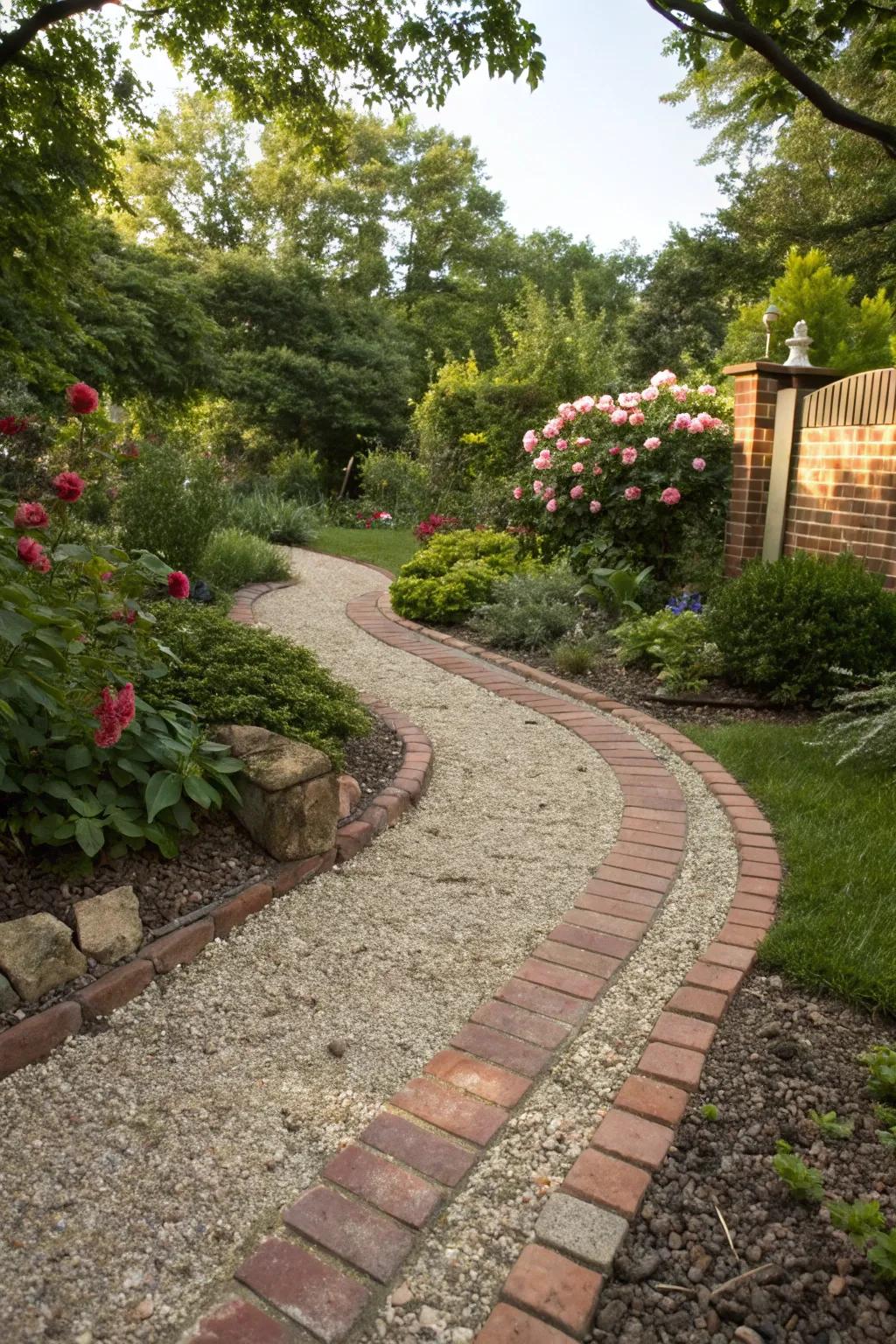
Opt for permeable surfaces like gravel or bricks, which allow water infiltration and help manage runoff in a sustainable way.
Give these a look:
- Permeable Gravel for Landscaping: Enhance drainage and aesthetic appeal in your garden with versatile permeable gravel pathways.
- Landscaping Bricks for Pathways: Create beautiful, eco-friendly paths with durable bricks that support sustainable water flow.
- Permeable Landscaping Pavers: Opt for eco-conscious pavers that help manage runoff, enhancing your New Mexico backyard.
17. Install a Fire Pit
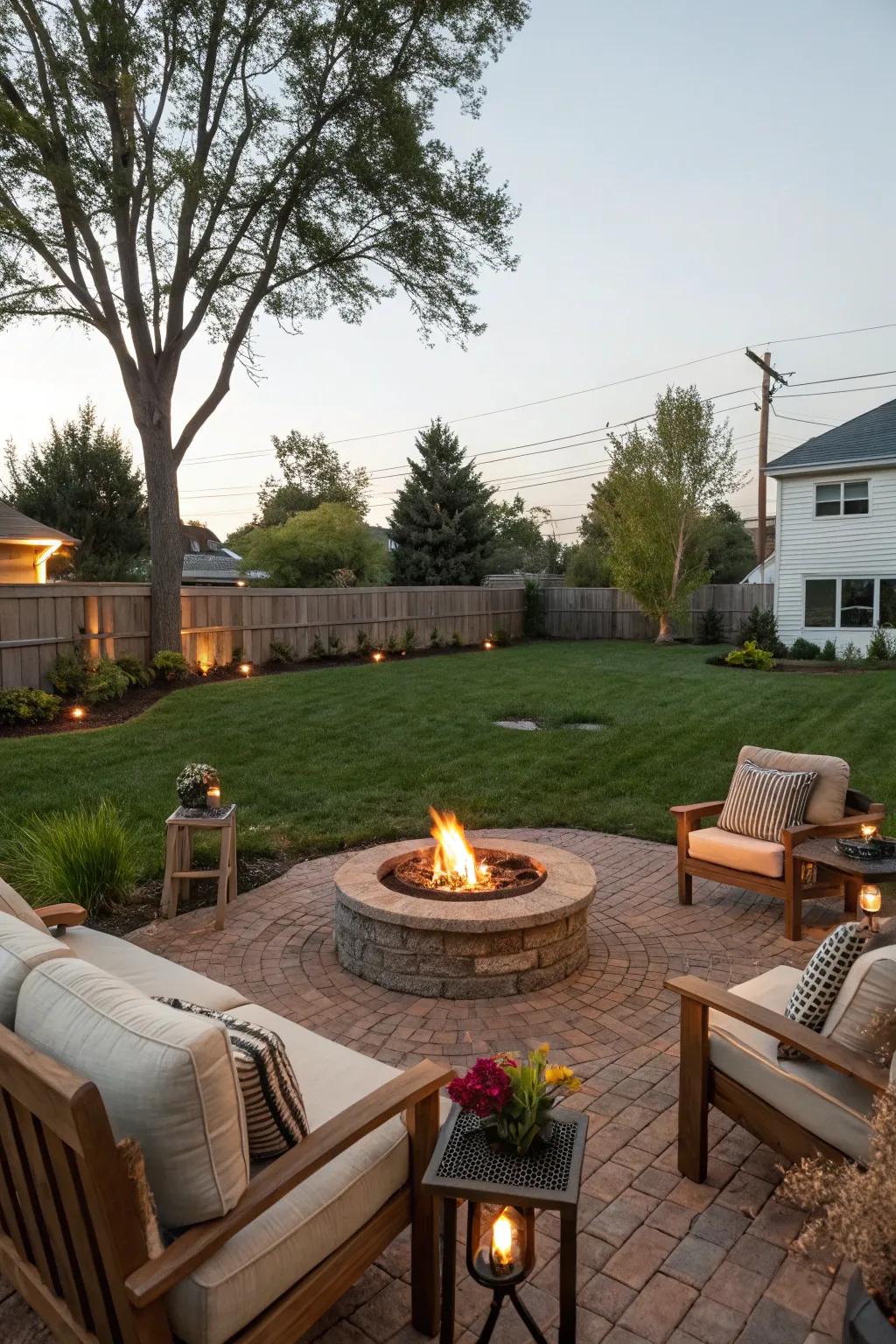
A fire pit can be a gathering focal point, perfect for chilly desert evenings. I always find it creates a warm, inviting atmosphere.
Possibly helpful picks:
- Outdoor Fire Pit Kit: Transform your backyard with this easy-to-install fire pit kit for cozy gatherings.
- Weatherproof Patio Furniture Set: Complete your fire pit area with comfortable, stylish weatherproof patio furniture for ultimate relaxation.
- Solar Garden Lights: Enhance the ambiance with these energy-efficient solar garden lights for a welcoming glow.
18. Use Lighting to Enhance Ambiance
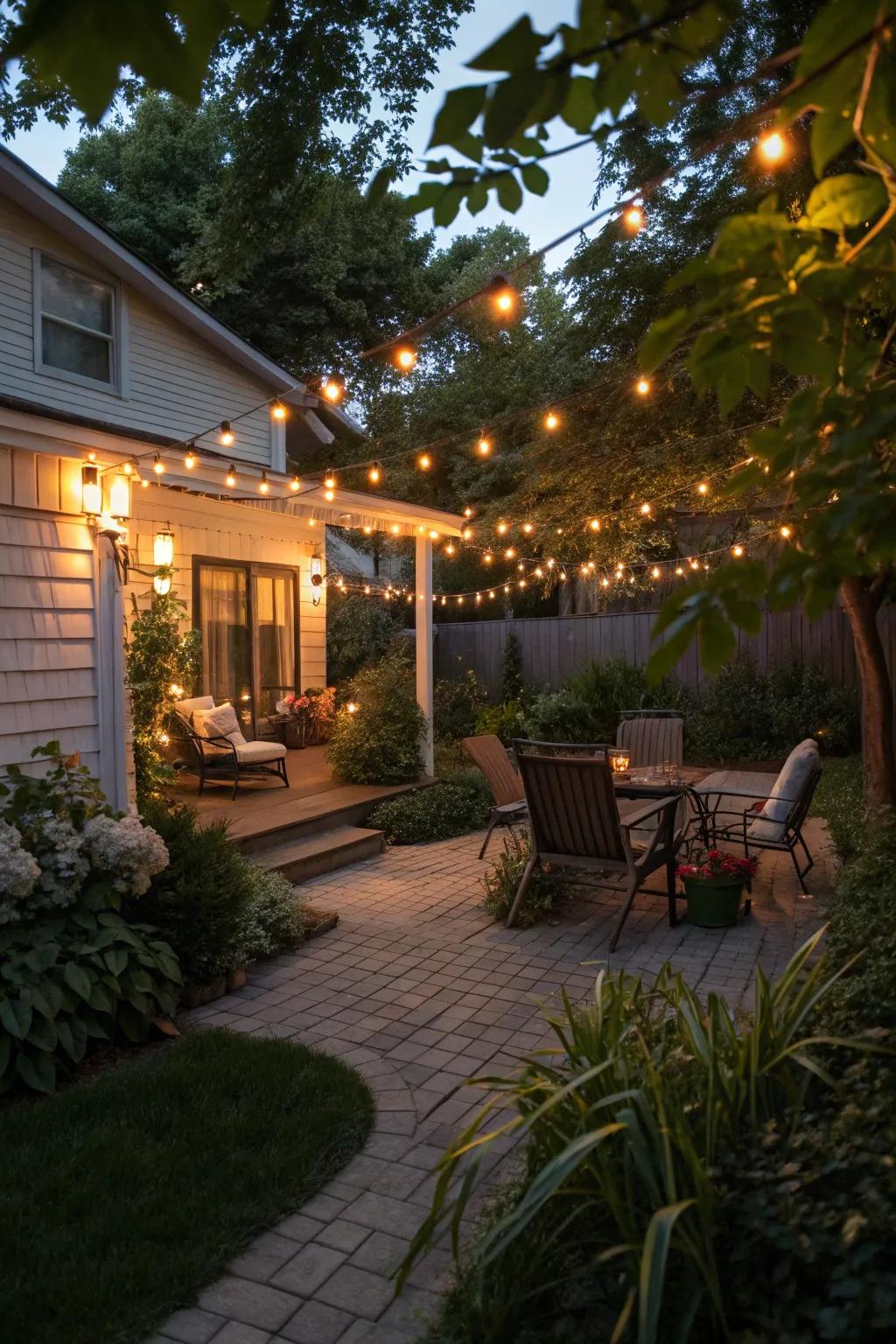
Install outdoor lighting to highlight features and create ambiance for evening enjoyment. Solar lights or string lights can add a magical touch.
May just do the trick:
- Outdoor Solar String Lights: Illuminate your garden pathways with solar string lights, adding a soft, enchanting glow.
- LED Patio Lanterns: Enhance patio ambiance with charming LED lanterns, perfect for cozy evening gatherings.
- Waterproof Garden Path Lights: Define garden paths with waterproof lights, ensuring safety and style all night long.
19. Incorporate Terracing
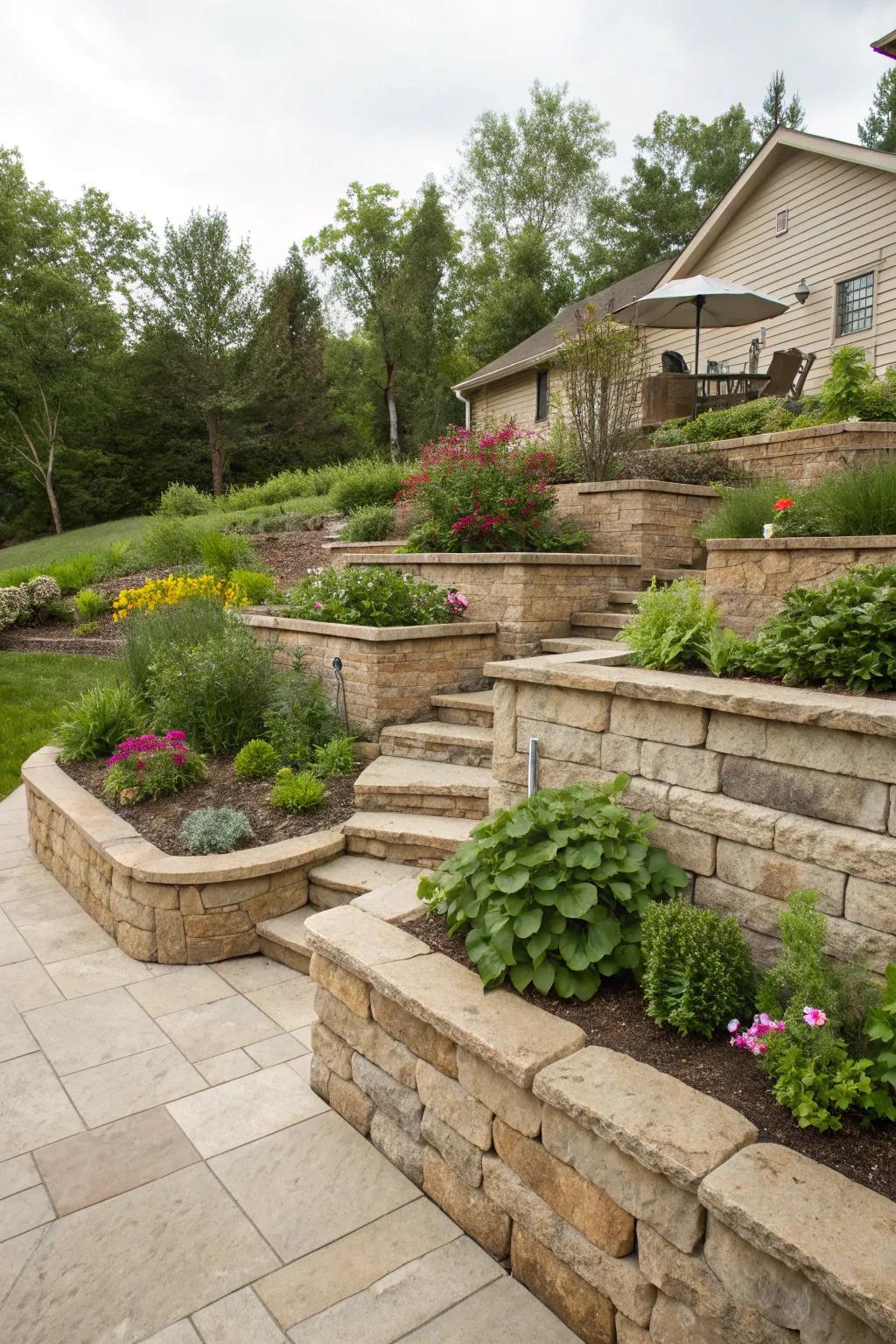
If you have sloped areas, use terracing to add dimension and functionality. It helps to manage elevation changes while creating distinct planting zones.
A few helpful options:
- Landscape Retaining Wall Blocks: Enhance your terraced garden with durable blocks, perfect for creating sturdy retaining walls.
- Terrace Garden Planters: Beautify each terrace level with stylish planters for an elegant, organized garden space.
- Outdoor Stair Lights: Illuminate your terraced paths with energy-efficient stair lights, enhancing safety and aesthetics.
20. Opt for a Vertical Garden

Maximize space with a vertical garden, using walls or trellises for climbing plants. It’s a great way to add greenery without taking up too much ground.
Try these:
- Wooden Garden Trellis: Enhance your space with this wooden trellis, perfect for supporting climbing plants beautifully.
- Vertical Wall Planter: Create an eye-catching vertical garden with this easy-to-install wall planter.
- Climbing Plant Supports: Support your vertical garden with sturdy and reliable climbing plant supports.
